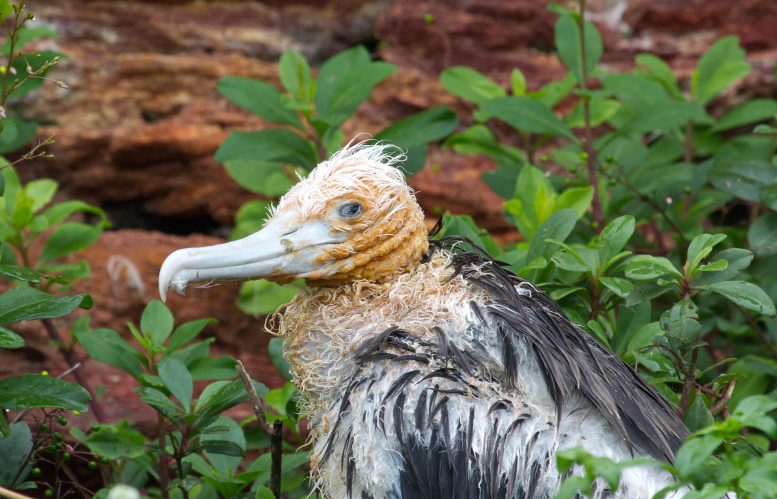
Overall Winner: “Sick” by David Costantini. Viruses are a significant ecological concern because they are responsible
for a variety of pathological effects in wildlife. This picture shows a chick of Magnificent frigatebird (Fregata magnificens) with clear signs of a viral disease that gives low chances of recovery. Credit: David Costantini
From shy ferns to idle meerkats and bathing king eiders, the Seventh BMC Ecology Image Competition has produced an eclectic array of images that showcase the beauty and diversity of life on our planet, as well as its intricate relationships and risks. All images are open access and available for use under a Creative Commons Attribution 4.0 license.
The overall winning image by David Costantini from the Muséum National d’Histoire Naturelle, Paris, France depicts a magnificent frigatebird (Fregata magnificens) chick. The large seabird is found near the tropical and subtropical waters off America, as well as the Cape Verde and Galápagos islands. The chick represented in the winning image is suffering from a viral infection from which it is unlikely to recover.
David Costantini said: “I took the photograph in French Guiana, where viral outbreaks annually affect a population of frigatebirds. An ongoing research project is trying to figure out the causes and consequences of this disease and to find solutions for the conservation of the local frigatebird population.”
Section editors Luke Jacobus and Josef Settele both recommended the entry, saying: “David Constantini’s powerful image illustrates that there are other species profoundly affected by viruses and these processes are part of nature and our environment, something that seems particularly important at the time of the current pandemic.”
In addition to the winning image, there is an overall runner up, as well as winners from four categories: Behavioral and Physiological Ecology Community, Population and Macroecology; Conservation Ecology and Biodiversity Research; Landscape Ecology and Ecosystems; and the Editor’s Pick.
The winning images and an additional seven highly commended images highlight pressing issues in ecology, from the challenges many species face in today’s environments, to mutually beneficial or parasitic relationships between species, curious phenomena found in nature and the potential of sustainable technologies.
All of the winning images (besides for the overall winner, which is displayed at the top of this page) and highly commended images are included in this gallery:
“The forest green lizard (Calotes calotes) is large among the lizard species measuring 50-65cm, from its head to tail. This lizard, as its name suggests, has a bright green dorsal color with 5-6 cream or deep green transverse stripes. These stripes continue to its tail. During the breeding season, the male lizard’s head and throat will turn bright red, while the underside of its body turns pale green.”
Weevils infected by the “zombie fungus” Cordyceps.
A ghost crab hiding in a human footprint on a beach in China.
A beautiful demonstration of the “crown shyness” effect amongst different species of tree.
A wind farm in China’s Gobi Desert.
King eidar duck bathing in some shallow water.
An adolescent female gelada monkey bites and claws at a bothersome fly in mid-flight.
Meerkats (Suricata suricatta) spend a large amount of their active time foraging. This female meerkat, radio-tracked by scientists for hours under the sunlight of Kalahari, decided to take a break and enjoy some minutes of idleness.
Australian green mantis (Orthodera ministralis) and an attacking spider.
Dialommus macrocephalus taking a “sun-bath.”
Taken at Dandenong Ranges National Park in Australia, this picture shows the unexpanded frond of an Australian tree fern (Sphaeropteris cooperi), which is
This confocal image, taken at the EMBL light microscopy facility, shows the diatoms’ cell wall (cyan), chloroplasts (red), DNA (blue), membranes, and organelles (green).
Heat waves in the Kalahari are often followed by impressive lightning storms.
The Landscape Ecology and Ecosystems category winner was captured by Kang Xu from Zhejiang University, China. It shows a wind farm in China’s Gobi desert. Kang Xu said: “Our previous research demonstrated that constructing wind turbines in the Gobi Desert may be a win-win strategy that contributes to the growth of desert vegetation with a favorable microclimate and sufficiently utilizes wind power to produce clean energy. During our field study, we took this photograph of the largest wind farm-desert coupled ecosystem.”
The editor’s pick titled ‘The King’s Bath’ by Nayden Chakarov from Bielefeld University, Germany shows a large sea duck called the king eider having a splash in the water. King eiders breed only in the highest Arctic territories.
Editor Alison Cuff said: “I picked this image because of the vibrancy of the bird against an almost monochrome background and also because it is in stark contrast to our overall winner.”
Now in its seventh year, the BMC Ecology Image competition was created to give ecologists the chance to share their research and photography skills, and to celebrate the intersection of art and science. The winning images are selected by the Editor of BMC Ecology and senior members of the journal’s editorial board.
Alison Cuff said: “We were delighted at the variety and quality of the images submitted to our seventh competition. Our section editors used their expertise and knowledge to ensure that our winning images were picked as much for the scientific story behind them as for the technical quality and beauty of the images themselves. As such, the competition very much reflects BMC’s ethos of innovation, curiosity, and integrity and it is an opportunity to cherish, celebrate and better understand the extraordinary natural world, especially at a time when some may be thinking of biodiversity as a threat to public health.”
Reference: “Seventh BMC ecology image competition: the winning images” by Alison L. Cuff, Michel Baguette, Simon Blanchet, Luke M. Jacobus, Dominique Mazzi and Josef Settele, 6 August 2020, BMC Ecology.
DOI: 10.1186/s12898-020-00310-w

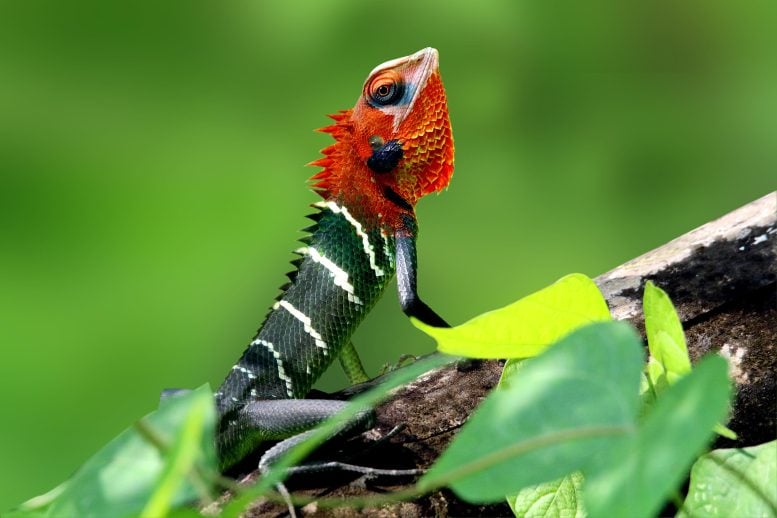
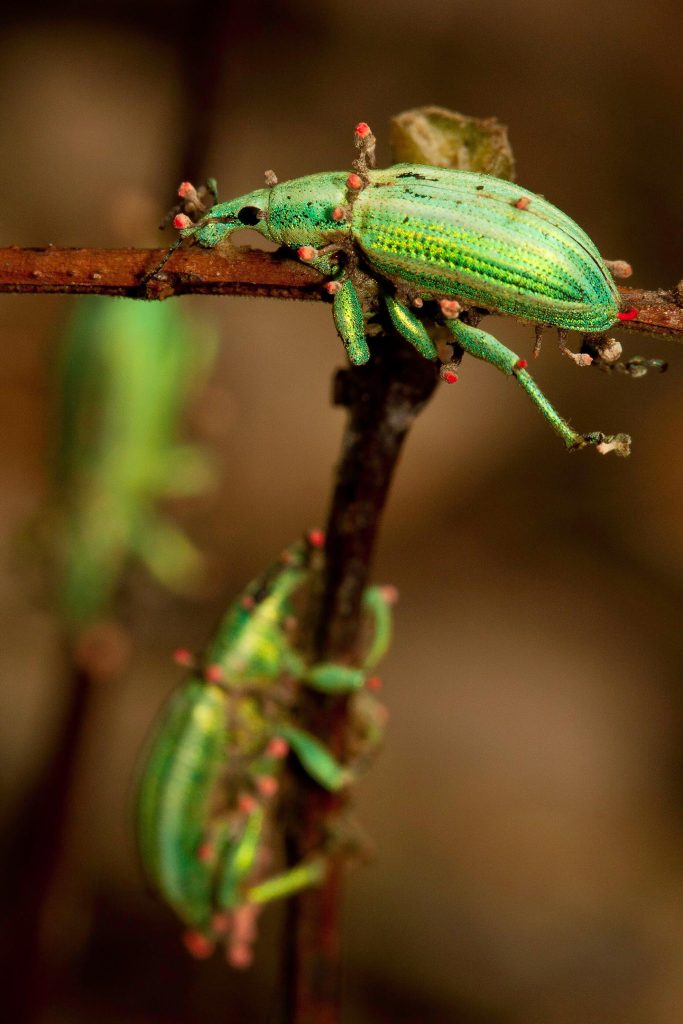
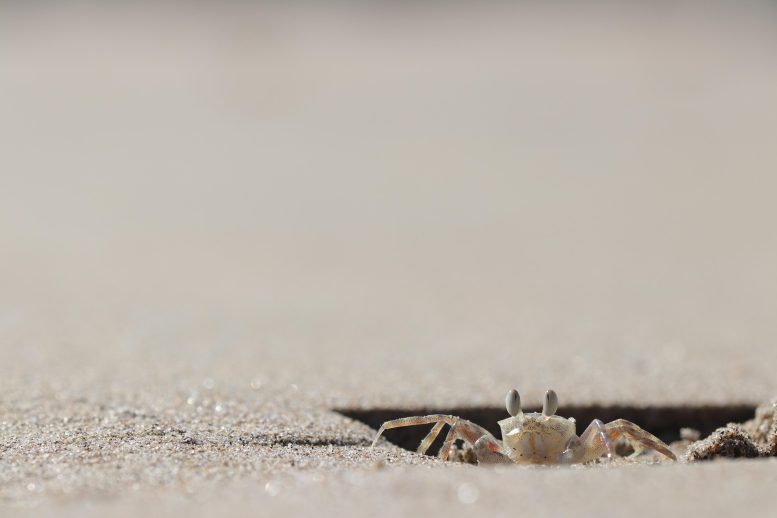
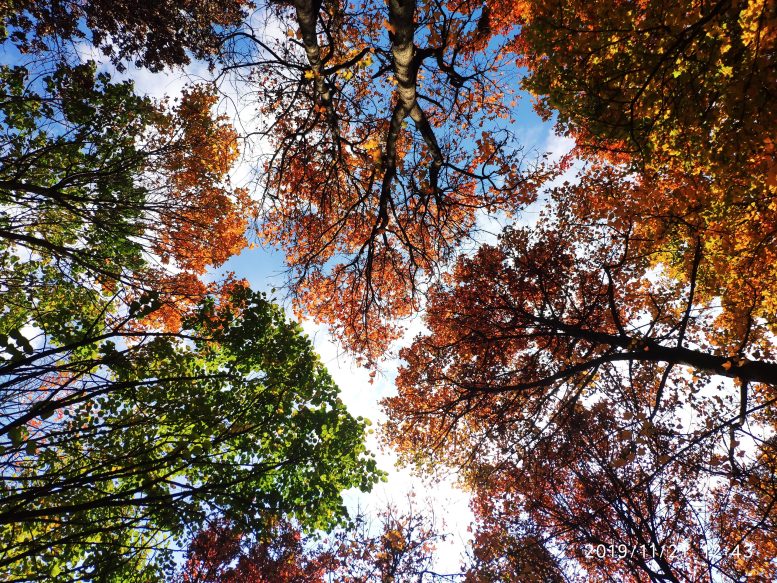
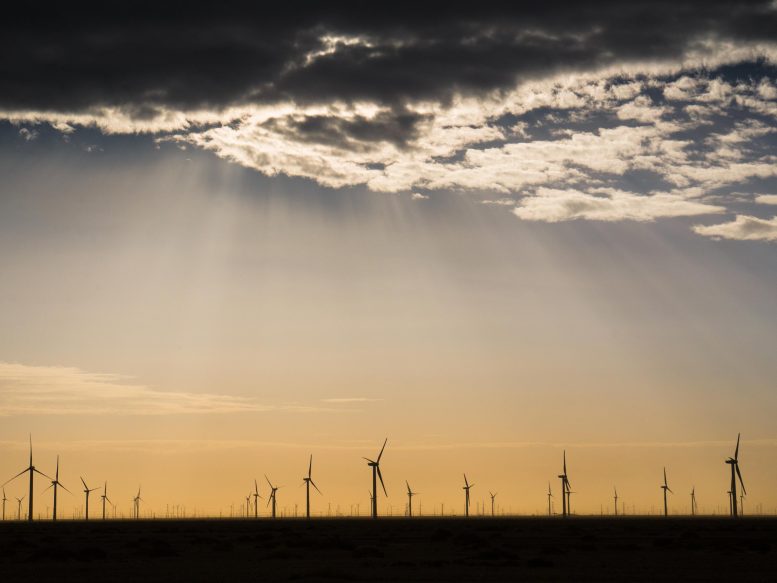
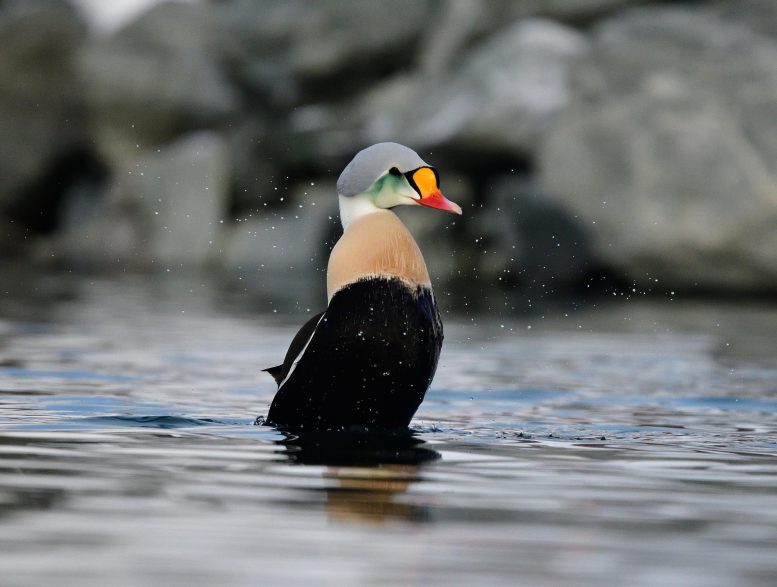
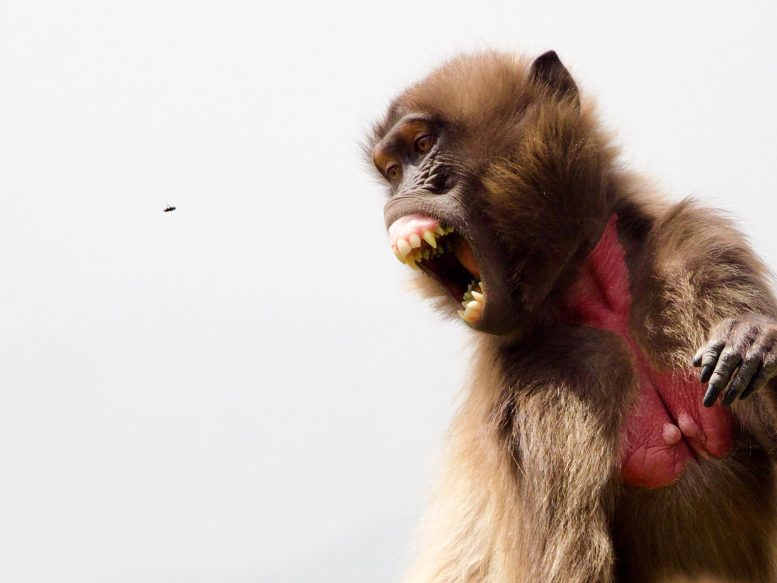

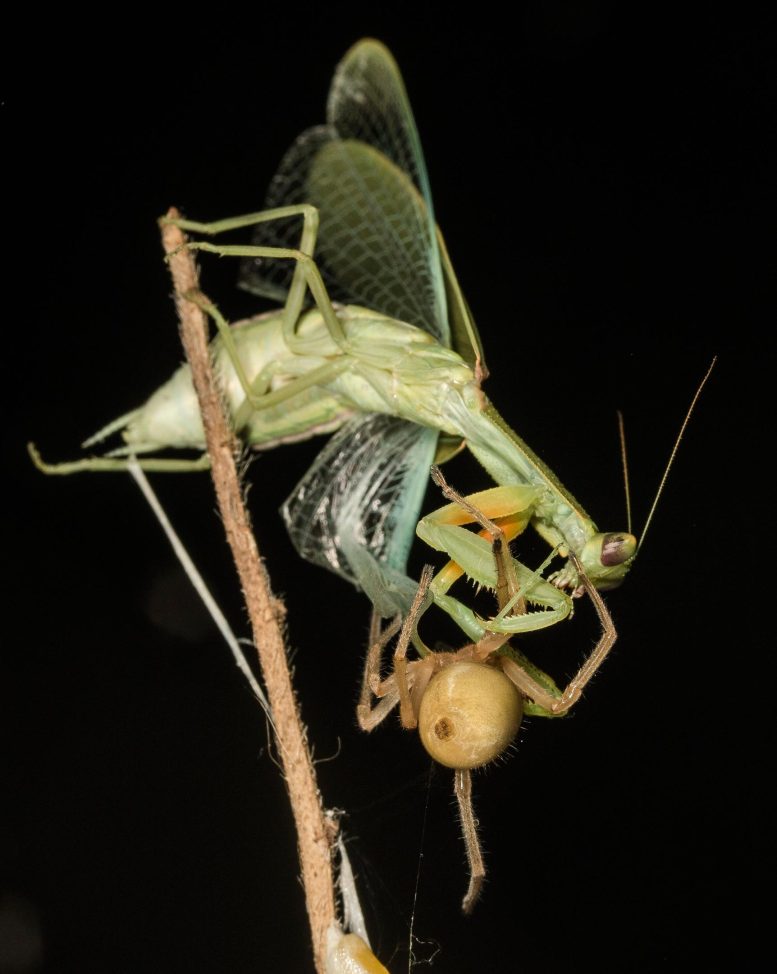
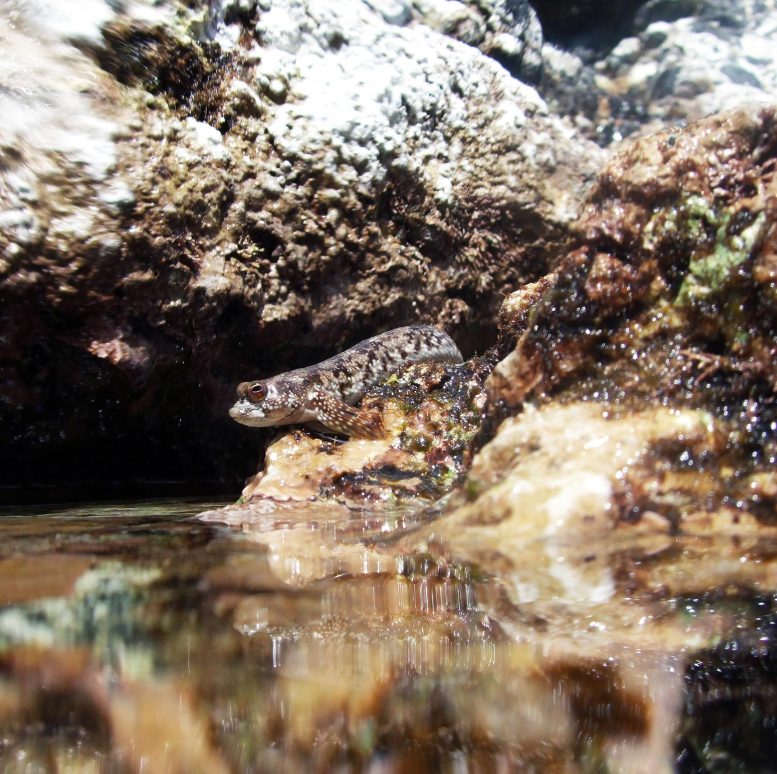
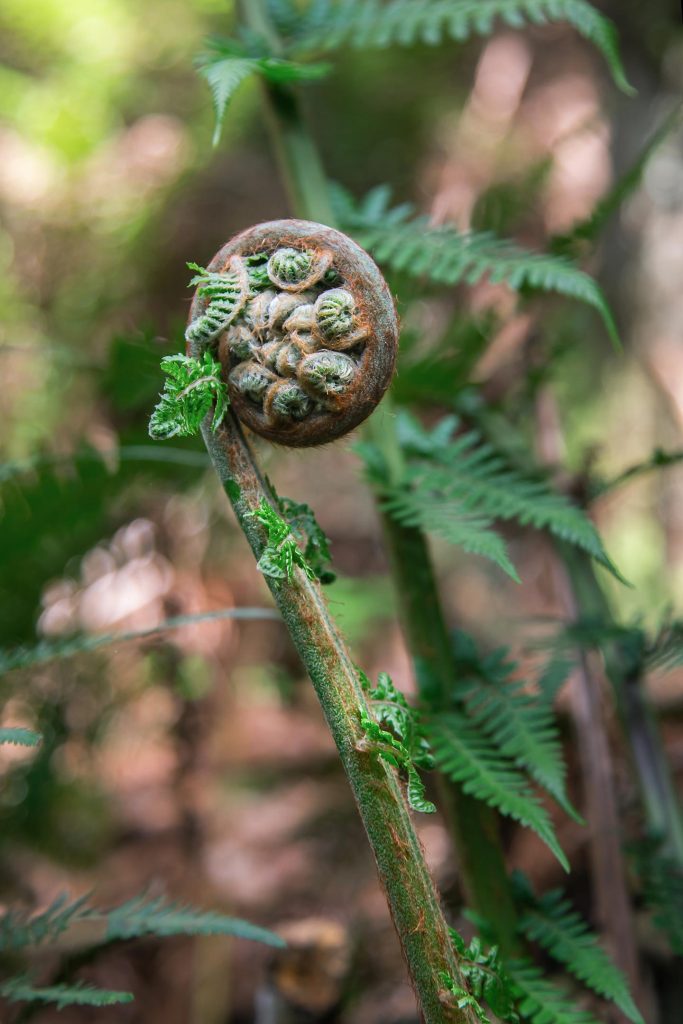
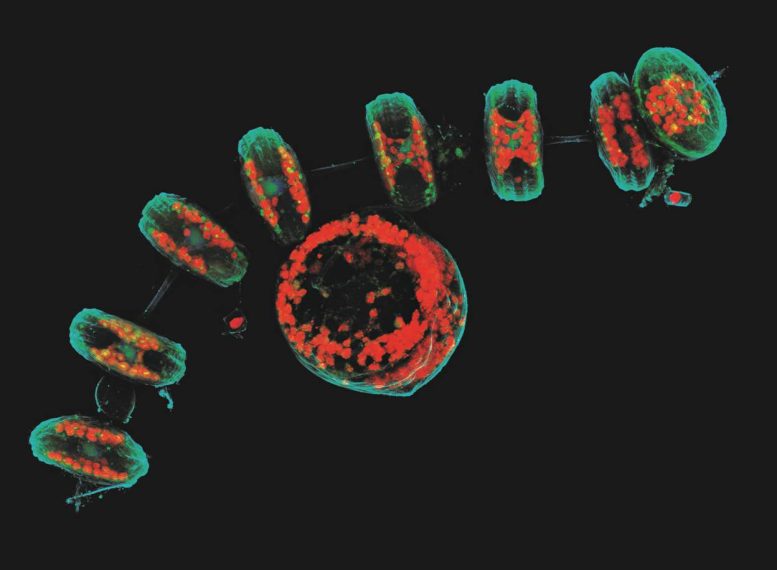
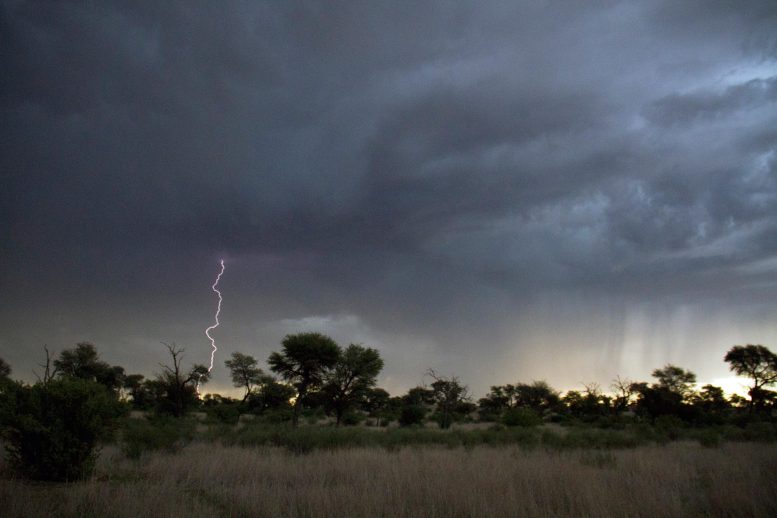
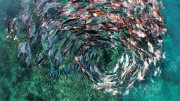
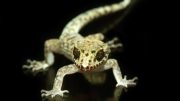
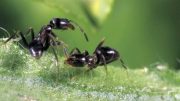





Be the first to comment on "See the Amazing Wildlife Photos That Won the 7th Annual BMC Ecology Image Competition"